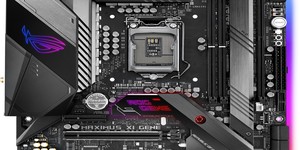
Alien: Isolation
Publisher: SegaFrom our Alien: Isolation review:
'It’s a delightful surprise that such a game has emerged from a mainstream developer/publisher relationship. A game that embraces vulnerability rather than pushing a power fantasy, that demands a slow pace and rewards careful play instead of twitch-skills and killstreaks, that emphasises smart level design and wonderfully crafted systems in lieu of pretty but arbitrary skyboxes and overwhelming your senses with bullets and explosions.
Most of all though, Isolation reminds me of why the Xenomorph became the horror icon it did. It achieves what I like to call deep horror, an experience which goes beyond the simple jump scares of Slenderman or films like Paranormal Activity. It lingers in your brain a long while after witnessing its closing scenes, that’s layered in the time and history of a real-feeling place. To dispense with the florid prose, it’s an absolutely superb game, and it’s a testament to its quality that despite potentially giving me an annoying and unpleasant skin condition, I already want to play it again.'
We test Alien: Isolation at the highest possible settings at all resolutions. All detail levels are set to 'Ultra', and the Shadow Map Resolution option is set to 2,048. We also turn on Motion Blur, Depth of Field, Chromatic Aberration, Planar Reflections, HDAO and Volumetric Lighting. Anisotropic filtering is set to 16x and we use the SMAA T2x anti-aliasing option. We benchmark the first 60 seconds of the game's built-in benchmark (the most demanding part), which is accessed by adding "-benchmark" to the game's launch options in Steam.
Unigine Valley 1.0 Benchmark
Publisher: UnigineUnigine's free Valley 1.0 benchmarking tool works well as a graphics benchmark as it is GPU limited and is thus incredibly taxing on the GPU whilst placing the CPU under very little stress. Unigine's scoring system is effectively linear: a card with 2,000 points is considered twice as fast as one with 1,000 points, and half as fast as one with 4,000 points. As such, you can easily replicate and run the test on your own system to gauge roughly how big a difference an upgrade would likely make for you.
BioShock Infinite
Publisher: 2KFrom our Bioshock Infinite review :
"Your character Booker’s trip to Columbia is in the interest of retrieving a girl, Elizabeth, from captivity. It’s imperative that you find her so that you can clear a pile of debts, but it’s increasingly clear as your time in columbia continues that this isn’t a simple hero's tale. Elizabeth has the power to control “tears in reality" that are popping up all over the city."
"It’s an adult, thoughtful and compelling work that shames many (if not most) other attempts in the medium. Bioshock Infinite is an incredibly good video game. It might be one of the best.
We use the handy in-built benchmarking tool to run a timedemo from two sections near the start of the game. However, we've found the game-generated results to be unreliable, so use FRAPS to record the frame rate over a 40 second sequence of gameplay during the second test. The results taken are an average of three repeated tests.

MSI MPG Velox 100R Chassis Review
October 14 2021 | 15:04








Want to comment? Please log in.